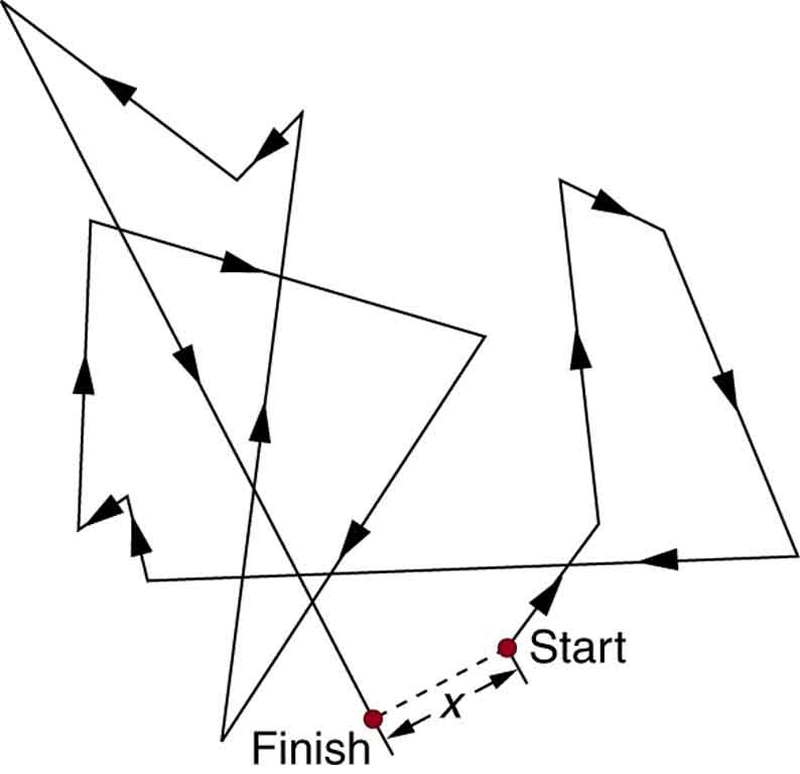| << Chapter < Page | Chapter >> Page > |
There is something fishy about the ice cube from your freezer—how did it pick up those food odors? How does soaking a sprained ankle in Epsom salt reduce swelling? The answer to these questions are related to atomic and molecular transport phenomena—another mode of fluid motion. Atoms and molecules are in constant motion at any temperature. In fluids they move about randomly even in the absence of macroscopic flow. This motion is called a random walk and is illustrated in [link] . Diffusion is the movement of substances due to random thermal molecular motion. Fluids, like fish fumes or odors entering ice cubes, can even diffuse through solids.
Diffusion is a slow process over macroscopic distances. The densities of common materials are great enough that molecules cannot travel very far before having a collision that can scatter them in any direction, including straight backward. It can be shown that the average distance that a molecule travels is proportional to the square root of time:
where stands for the root-mean-square distance and is the statistical average for the process. The quantity is the diffusion constant for the particular molecule in a specific medium. [link] lists representative values of for various substances, in units of .

| Diffusing molecule | Medium | D (m 2 /s) |
|---|---|---|
| Hydrogen | Air | |
| Oxygen | Air | |
| Oxygen | Water | |
| Glucose | Water | |
| Hemoglobin | Water | |
| DNA | Water |
Note that gets progressively smaller for more massive molecules. This decrease is because the average molecular speed at a given temperature is inversely proportional to molecular mass. Thus the more massive molecules diffuse more slowly. Another interesting point is that for oxygen in air is much greater than for oxygen in water. In water, an oxygen molecule makes many more collisions in its random walk and is slowed considerably. In water, an oxygen molecule moves only about in 1 s. (Each molecule actually collides about times per second!). Finally, note that diffusion constants increase with temperature, because average molecular speed increases with temperature. This is because the average kinetic energy of molecules, , is proportional to absolute temperature.
Calculate the average time it takes a glucose molecule to move 1.0 cm in water.
Strategy
We can use , the expression for the average distance moved in time , and solve it for . All other quantities are known.
Solution
Solving for and substituting known values yields
Discussion
This is a remarkably long time for glucose to move a mere centimeter! For this reason, we stir sugar into water rather than waiting for it to diffuse.

Notification Switch
Would you like to follow the 'College physics' conversation and receive update notifications?